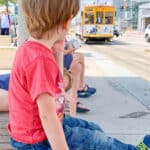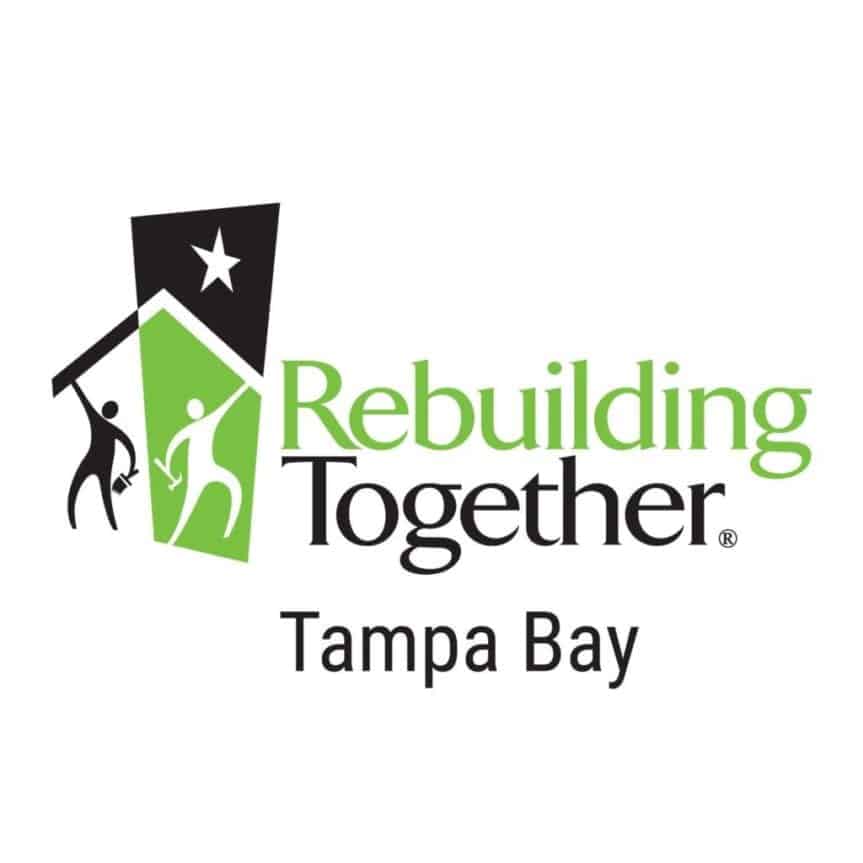Rebuilding Together Tampa Bay: Healthier Homes, Happier Families
A small change like replacing the carpet in an asthmatic child’s room is enough to improve the quality of a child’s life, greatly reducing and even eliminating visits to the emergency room. But for some families, that repair is a struggle too expensive to bear.
This is where Rebuilding Together Tampa Bay steps in. With the belief that every child deserves a safe place to live and grow, the organization has repaired and rehabilitated more than 500 homes in Tampa Bay since 2000 and is on track to repair 150+ more homes per year with the support of volunteers, the Children’s Board of Hillsborough County, other local government agencies and corporate donors like Lowe’s.

Looking for Things to Do in Tampa Bay?
>>This Week’s Favorite Events
>> Nearby U Pick Farms
>> 40+ Free Things to Do with Kids
We sat down with RTTB’s executive director Jose Garcia.
TBP: What is RTTB?
JG: We provide residential repairs and rehab services to low-income homeowners. Our goal is to make those home safer and healthier.
We engage volunteers to do the cosmetic exterior work, exterior painting [and] landscaping. Once we’re finished with the work inside and outside the house that requires permitting, we bring volunteers, which are the corporate donors, and along with funding from the Children’s Board, we leverage to complete the project.
We also build affordable houses. It’s not part of our core business, but it’s part of the investment that we make when we do community revitalization. We also focus on some neighborhoods—West Tampa, Sulphur Springs. In Hillsborough County we are starting to invest heavily in the Orient Park-Palm River and Progress Village. In Pinellas County, we are working in the Lealman neighborhoods.
The uniqueness of this program is that [it] is very structured. The homeowners are going to learn what the need is and why they’re getting the services. It’s not just repairing the roof because water is coming through—water is coming through, it may create mold, mold may be in the house, mold may trigger an [asthma] attack and an attack would impact a child. So now you have a much deeper explanation of the reason why you replaced the roof.
They are also going to learn how to maintain what they’ve got. This is going to help us make sure that as we continue to increase the number of houses impacted, we don’t have to go back to the houses we did 4-5 years prior.
TBP: Let’s talk about the Safe and Healthy Home Program.
JG: Homeowners apply and do a home self-assessment so they know what the issues are in their house, and then we send a professional who does an actual home inspection.
Homeowners go through an education component. That’s what we call the sweat equity investment—they attend four different classes, and then after that, we do what is called a home intervention or substantial rehab. The home intervention includes things like cleaning the air ducts, replacing carpet in the bedroom where the children sleep, making sure that mold is taken care of…things that [to] make sure children have no contact with anything that may cause an asthma attack, allergy, discomfort…things like that.
The home intervention is the lowest effective investment in the house. In a substantial rehab, we replace a roof because it has to be replaced. In a home intervention, we may be able to repair the roof and extend the life of the roof by five years, giving us or giving the homeowners sufficient time to save enough money to be able to [afford] the replacement. Part of the education includes how to go beyond that first year, [such as] financial literacy knowledge so they can save money to fix issues.
TBP: What impacts have you seen on children’s health in the homes you have repaired?
JG: We’re hearing things like, ‘I used to go four times to the emergency room. After you guys came in, we haven’t gone.’ We have case studies actually that some of the children have stopped taking medication or reduced medication as a result of no more triggers in the house. Just in that year. Parents are not missing days of work. Children are attending school. Behaviors are much better.
TBP: We heard about an app you are working to release in July that was inspired by what you learned during the pandemic.
JG: During COVID, we learned that if the homeowner, through the use of tech, can walk us through what the needs are in the house, we can act quickly. With their phone they can take pictures and upload it to the data base, and that way we can know what’s going on in the house. When we are sending someone to do a professional home inspection, that person knows exactly where to go. And the classes can be taken online as well.
TBP: Tell us about your Take Home Kits.
JG: Once we have the home inspection completed, the program automatically distributes a Take Home Kit box to the homeowner. It includes items that will be utilized by the children like pillow covers, mattress covers, inhalers—things that will help them to be as healthy as possible in the house. It also contains the educational materials and allows them to log in to start getting the education.
To learn more or apply, visit: rttb.org





